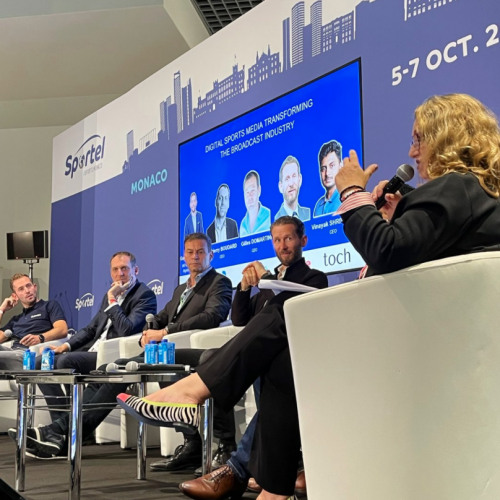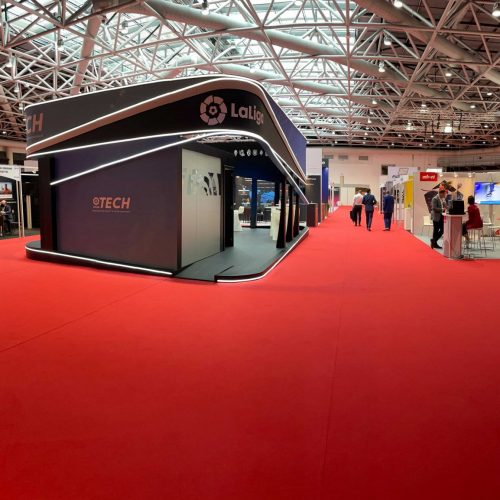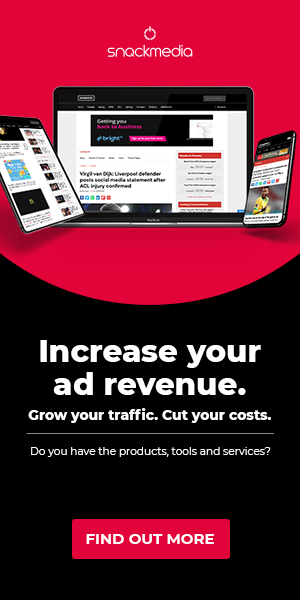Interview: Verizon Media’s Head of Video Product Management, Darren Lepke, talks new platform capabilities, their impact on fan engagement and the 2020 Super Bowl
Digital Sport’s Rupert Pratt sat down with Darren Lepke to hear how one of the world’s largest media technology companies are evolving their media platform to reinvent live programming and bring audiences together.
Rupert Pratt – Thank you for speaking to me today. Please could you give a bit more context around Verizon as a business, its make-up and the role that this product and you play within the company?
Darren Lepke – I’m the Head of Video Product Management for Verizon Media, and more specifically a group called the Media Platform. We are a business to business, SaaS offering or platform as a service offering for large broadcasters, content owners and rights holders. We work with some of the largest businesses in North America today, ESPN, Discovery, NBC and this year we were chosen to be the primary streaming workflow and delivery vendor for the Super Bowl for Fox Sports where we delivered their OTT video stream to consumers on mobile devices, connected TVs, new browsers and laptops in 4K UHD for the first time ever.
Verizon Media offers a wealth of digital services to content owners and publishers on the internet and has three different parts of the business beyond just the video streaming offering. There is our core video platform, but we also offer a content delivery network, where we do web site acceleration, caching large enterprise customers beyond the video and media entertainment space, and provide a suite of web security products to help people protect their websites and applications.
We’re an end to end platform as we handle everything from the point of ingest of your video stream, all the way through to delivering to the customer over the internet. When it comes to streaming a live event, there’s a three-step process. First is getting the video out of the venue and then step two is delivering it to HQ for production before distributing the finalised content back out to the satellite provider. That’s really where we fit into the ecosystem.
Rupert Pratt – Can you give us a bit more detail on the background behind these innovations and a brief overview of the product and its benefits?
Darren Lepke – If you think about that third step i.e. once the channel is ready to go, we pick up from there. The first part of our product is a lightweight piece of software that we call the slicer, something we offer customers that helps them ingest their video and prepare it for distribution over the internet. We’re seeing more broadcasters use this service to ensure its video is consistently delivered at the highest quality, over a simplified workflow at scale from the server where our software is running from. It ingests the content, takes it to the cloud and then encodes all of that content. It’s encrypting the content as it’s going along and keeping track of all the ad markers and ad breaks. The quality ranges anywhere from audio only streams all the way through to 4K HDR streams. It’s the same thing with audio, and then once the content is prepared, it’s encoded.
It’s then delivered to our specialist Content Delivery Network that allows media owners to stream video to the viewer at the highest possible standard whatever the demand. Then when a user presses play by logging into the ESPN app or Fox Sports website, it makes a request to our server and we establish a one to one session with a viewer where we’re delivering them personalised and targeted content like targeted ads. If a broadcaster has specific rules i.e. regional blackouts, we can block all users attempting to watch it from outside those regions. All those rules are built into that session management system, which then facilitates downstream delivery to the viewer before all the content we’ve encoded is streamed from the CDN out to the user.
We have worked very closely in the development of this feature with large broadcasters, it’s been designed to integrate seamlessly with existing broadcast play-out systems, such that our customers don’t have to replicate their broadcast workflow.
Over the past however many years they have been migrating from analogue to digital and IP. There are now a lot of components that were traditionally on premise for our customers and their own data centres, which are now moving to the cloud. Our goal throughout the entire development of this product has been to make it easy and as seamless as possible. We want to reduce as much friction as possible by integrating directly with existing systems and workflows – automating the process for those who don’t necessarily have the digital expertise.
By simplifying every step of the streaming and delivery workflow as much as possible, our customers don’t have to be technical experts. As we move into actually streaming live events, we are there to support them and provide a suite of managed services around ingestion and play-out management. We have a 24/7 Network Operations Centre ensuring that networks and streams are working correctly and really work hand in hand with our partners. We’re not a vendor to our customers, we are true partners in that we make sure you have experts there during and throughout the live event to make sure everything goes smoothly.
Rupert Pratt – So effectively the new product features are just an extension of your existing OTT product?
Darren Lepke – Some of them are extensions of our existing platform but some are a response to the recent events around the world. The pandemic has acted as an accelerant for industry trends. It is pulling forward roadmaps and plans that we expected to happen 12 to 24 months in the future and is causing us to reassess our product roadmap such as introducing more interactive viewing features i.e. watch togethers. We’ve talked about what the future of fandom will be when your team is available within reach from your pocket, at the stadium or with friends. We are really seeing a lot of investment and attention being paid to enhancing the fan experience at home and bringing shared emotion back to the viewing experience.
Broadcasters are trying to capture the excitement of live sports for audiences when games are being played in empty venues. So for us, that’s meant a slight shift in some of the features we’ve prioritised like real-time video in order to do a video chat, where you’re watching a match and ensuring that all four friends are seeing the same event. Helping these broadcasters recreate the excitement of live sports for viewers at home and enhancing the in-venue experience when fans are able to be back in the stadium.
Imagine being in Wembley Stadium far up in the back corner, you can’t really see the pitch very well but now, with multi-angle viewing capabilities, through an app on your phone you can see the game from any number of angles, pause and replay a goal that you might have missed. Imagine the potential of this technology to immerse viewers and we’re likely to see further sporting innovations as 5G emerges as a new wireless standard.
Rupert Pratt – Is the net benefit for customers, increased subscriptions, increased monetisation and monetisation methods (whether that be new subscribers, retaining subscribers?)
Darren Lepke – We can expect more advertising, decreased churn rates, more viewing hours, more sponsorship opportunities and a reduction in operational costs on the production side as well. We do offer managed services around the Managed Slicer software to the point of ingest. What gets lost in conversations around innovation is, what are the operational costs that our customers are faced with given that they can’t send staff to stadiums anymore? Sometimes they won’t have access to their data centres. How do they take on the very hands on world of sports production, virtualise it and move it to the cloud?
That’s when we come in as a partner and say, we’ll help you enhance your revenue, we’ll provide you with real-time monitoring of actual network assets whether it’s in our or your data centre. We have the tools to allow us to ensure the software is running correctly; the streams are coming in from the stadium and that the audio feeds are working correctly. We’re also helping reduce costs around staffing and some of the technical infrastructure that results in a more profitable business for broadcasters.
Rupert Pratt – Tell us a bit more about your collaboration with Fox for your work on the Super Bowl and how well it was received.
Darren Lepke – The Superbowl was a yearlong project and for us, it was a privilege to be a part of the process. We invested a lot of time and effort into our platform in two key areas:
- The number of potential or concurrent viewers that we could have and support
- The quality of the video stream itself.
Fox stated very early on that they intended it to be the first large global sporting event that was streaming their content, not only in 4K, but also in HDR (high dynamic range), which is a method of implementing the number of colours and contrast on the screen in a way that had never been done before.
We don’t expect that every single event will be streamed in 4K, certainly the larger ones but ultimately, we are seeing the demand for quality getting higher and higher. I think we’ll see how far the envelope gets pushed at the Olympics next summer. But for us, it was great to hear all the good feedback from audiences who had 4K enabled and we had 3.5 million concurrent viewers.
The Super Bowl was watched by 102 million viewers across FOX, FOX Deportes, NFL, and Verizon digital properties and was the most live-streamed Super Bowl ever with an average minute audience of 3.4 million. Our pre-game testing included scenarios of up to 11M concurrent viewers ensuring we would be able to handle a record-breaking live streaming audience.
This article was sponsored by Snack Media, a leading independent sports digital media company with over 42m sports fans & 600m cross platform views. Their network includes over 500 publishers from independent websites to global rights holders. In 2020 Snack Media acquired Givemesport.com, the largest sports publisher on Facebook globally. To find out more, contact rupert@snack-media.com
To read the full press release on Verizon Media’s new platform capabilities, click here.
About author
You might also like
SPORTEL Monaco 2021: CEO Laurent Puons praises event
The second day of SPORTEL 2021 got underway this morning in Monaco. Following on from yesterday’s masterclasses, Wednesday played host to a number of conference talks from industry-leading professionals. The
SPORTEL 2021: Day One Recap
This year’s prestigious SPORTEL convention kicked off in sunny Monaco today, welcoming a host of familiar faces as well as plenty of new ones. Doors opened at 8:30am with businesses
SPORTEL 2021: Monaco prepares to host prestigious October convention
After a one-year hiatus due to the impact of COVID-19, the world-renowned sports media and tech convention, SPORTEL, returns to host its annual event in Monaco. The conference will take








